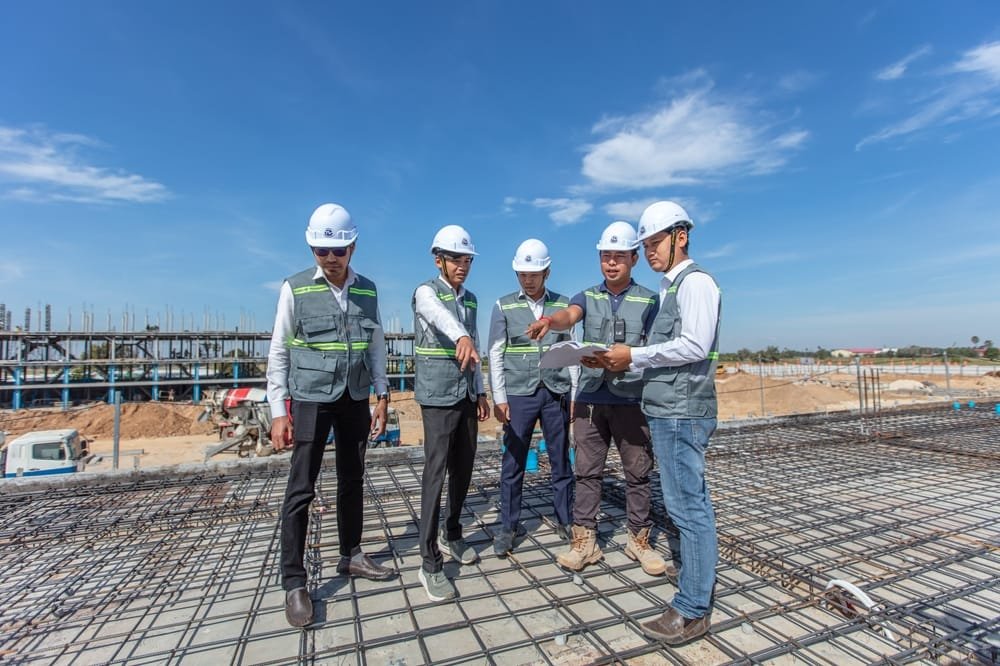The construction industry in Cambodia has undergone rapid transformation in recent years. Unfortunately, this rapid development has brought new challenges, including unsafe working conditions. Recent Cambodia Construction Safety Standards reforms, however, are addressing these problems head-on. By enhancing construction safety standards, the Cambodian government is improving working conditions, protecting workers, and reducing workplace accidents.
New Safety Master Plan in Cambodia Construction Safety Standards
In July 2023, the Ministry of Labor and Vocational Training (MOLVT) launched its third master plan on occupational safety and health (OSH) for 2023-2027. This master plan covers multiple sectors, including construction, textiles, and agriculture. The plan focuses on integrating safety practices into vocational training. This is a crucial step in preparing future workers to prioritize safety in their daily tasks.
Mr. Sam Soeun, President of the National Council of Trade Unions, highlighted the importance of this integration during the master plan’s announcement. He emphasized that by incorporating Cambodia Construction Safety Standards measures into training, the workforce will be more skilled and aware of health risks, leading to better working conditions.
This comprehensive framework includes six key strategies, designed to reduce accidents and promote better occupational health across all sectors. These strategies are backed by SMART indicators, which provide specific, measurable goals to track progress over time.
International Collaboration for Better Standards

Cambodia’s construction industry has long been underregulated, resulting in tragic accidents in recent years. To address this, Cambodia has turned to international partners for support. In 2021, Australia and Cambodia signed an agreement focused on improving construction safety standards. This partnership aims to create safer worksites and reduce accidents through the development of legally mandated safety guidelines.
These new guidelines in Cambodia Construction Safety Standards will provide enforceable standards for construction sites across the country. Australia’s support also extends to raising awareness among private companies, urging them to take responsibility for ensuring worker safety.
This partnership came in response to several building collapses that resulted in numerous fatalities. Australia’s swift response to Cambodia’s request for help highlights the urgency of the situation. With these guidelines in place, workers and the public alike will benefit from safer environments.
A Focus on Worker Protection and Rights
The Cambodian government has also committed to improving the overall working conditions for its citizens. Under the Rectangular Strategy-Phase 4, Cambodia is focusing on job market development and the protection of workers’ rights. This strategy includes the enforcement of labor laws and social security measures, benefits like pensions and seniority bonuses.
The emphasis on occupational Cambodia Construction Safety Standards is aligned with international labor standards, such as the United Nations Sustainable Development Goals (SDGs). One key SDG, Goal 8, promotes safe and secure working environments for all workers.
Building a Safer Future for Cambodia
The reforms in Cambodia Construction Safety Standards reflect a broader commitment to protecting workers across all sectors. The third master plan on occupational safety and health provides a clear framework for achieving safer working conditions, while the partnership with Australia demonstrates Cambodia’s willingness to collaborate on an international scale. By improving safety standards and enforcing these new guidelines, Cambodia is taking essential steps to reduce workplace accidents and improve worker well-being. The future looks brighter as these reforms pave the way for a safer, more productive workforce.
